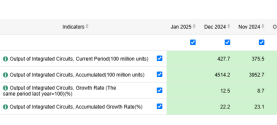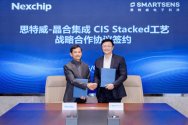The most powerful point in the whole article, IMHO -- this is only the beginning because the Chinese internal market is so immensely huge that it can absorb 400% more local chips :
Even at the projected annual growth rate of 12.3% from 2023 to 2028, locally made chips would only account for about 26% of its overall market.
"It is essentially impossible for China to make significant strides to become self-sufficient for its IC (integrated circuit) needs -- both memory and non-memory -- within the next five years and probably not even within the next 10 years," Brian Matas, market research analyst with TechInsights said.

But the market is already being impacted by China's localization push. Doris Hsu, chairperson of GlobalWafers, the world's third-largest supplier of base material for computer chips, said the slowdown of electric vehicle demand and intensified Chinese competition has made the SiC market very challenging.
"The internal competition in China is too intense. There are too many [Chinese] companies swiftly expanding their capacity ... and as a result you can buy silicon carbide so easily everywhere," Hsu told Nikkei Asia.
That graph doesn't tell the whole picture and is very misleading. For start by price, market share is skewed in favor of more expensives chips, like Nvidia ones. A single GPU chip cost probably much more than a thousand ESP32s ICs, by volume, "mature" chips are the majority of chips consumed in the electronic industry.
My raw estimation:
China 2024 IC imports is 549 billions units at a value of 385 billion dollars.

China 2024 IC exports is around 298 billion units at a value of 160 billion dollars

While domestic 2024 IC production is 451 billions units.

That means that China is producing 45% of the chips is consuming.
By value, let assume 82 billion dollars is digested domestically or 242 billion dollars with exports, that means China is about 37% by value.
But let discount chips made by foreign companies in China like TSMC, Korean memory makers and so on. I don't know why, but let's do it anyways, I think pure domestic production is already 25-30% by value right now.
My raw estimation:
China 2024 IC imports is 549 billions units at a value of 385 billion dollars.

China 2024 IC exports is around 298 billion units at a value of 160 billion dollars

While domestic 2024 IC production is 451 billions units.

That means that China is producing 45% of the chips is consuming.
By value, let assume 82 billion dollars is digested domestically or 242 billion dollars with exports, that means China is about 37% by value.
But let discount chips made by foreign companies in China like TSMC, Korean memory makers and so on. I don't know why, but let's do it anyways, I think pure domestic production is already 25-30% by value right now.


